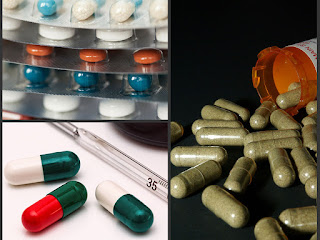GBI Research, a leading business intelligence provider, has released its latest research report, "
Glioblastoma Multiforme Therapeutics in Major Developed Markets to 2020 - Growth to Hinge on the Success of Personalized Vaccine Following Early Approval in Germany".
Due to the poor prognosis under currently available treatments, therapies with high potency are in strong demand in the Glioblastoma Multiforme (GBM) market. In newly diagnosed patients, the current standard of care, comprising resection surgery, radiation therapy and chemotherapy with Merck’s Temodar (temozolomide), has a maximum Overall Survival (OS) of 15 months and almost inevitable tumor recurrence. Current therapeutic options for recurrent GBM are Roche’s Avastin (bevacizumab), carmustine and other chemotherapy drugs used off-label. However, they only offer limited OS benefit, leaving high unmet need in this patient segment.
During the 20132020 forecast period, the GBM market is expected to grow rapidly from $301m to $623m. The market entry of Northwest Biotherapeutics’ DCVax-L, a dendritic cell-based therapeutic vaccine that acts as an add-on to the standard treatment in newly diagnosed patients, will account for much of this growth. Having demonstrated superior OS improvement compared with the standard treatment alone in clinical trials, it is expected to bear high market potential, given that its efficacy is translated into larger Phase III trials. The cancer vaccine Rindopepimut (CDX-110) and targeted therapy Cotara will also enter the GBM market, but will drive growth to a lesser extent. However, unmet needs are likely to remain in the relapsed setting over the forecast period due to the lack of superior OS benefits in the late-stage pipeline.
Scope
The report assesses the current GBM market and forecasts market trends to 2020, analyzing key drivers and barriers.The report includes -
- A brief introduction to GBM, including the disease pathogenesis, risk factors and diagnosis
- In-depth analysis of the drugs available for the treatment of GBM, including safety, efficacy, treatment patterns, and strengths and weaknesses, as well as a heat map comparing drugs in terms of safety and efficacy
- A comprehensive review of the developmental pipeline for GBM, including individual analysis of a number of late-stage pipeline drugs that are likely to enter the market during the forecast period, with the pipeline analyzed by Phase distribution, molecule type and molecular target
- Additional in-depth analysis of GBM clinical trials by Phase, molecule type, trial size, trial duration and program failure rate
- Multi-scenario forecast data for the GBM market to 2020, taking into account the introduction of new drugs, the expiry of key patents and the changes in disease epidemiology across the key developed markets of the US, Canada, Japan, Germany, the UK, France, Italy and Spain
- Discussion of the drivers of and barriers to market growth
- Discussion of the licensing and co-development deals landscape in GBM
Reasons to buy
The report will assist business development and enable marketing executives who wish to strategize their product launches by allowing them to -
- Understand the different levels of GBM therapies for newly diagnosed and recurrent GBM
- Understand the vast scope of the pipeline and determine which molecule types and mechanisms of action are prominent
- Observe the trends in clinical trial duration and size by clinical Phase and molecule type, and use the clinical trial failure rate analysis to assess the risk profiles of current and/or future developmental programs for GBM therapeutics
- Assess the potential clinical and commercial impact of current late-stage pipeline molecules on the GBM therapeutics market






